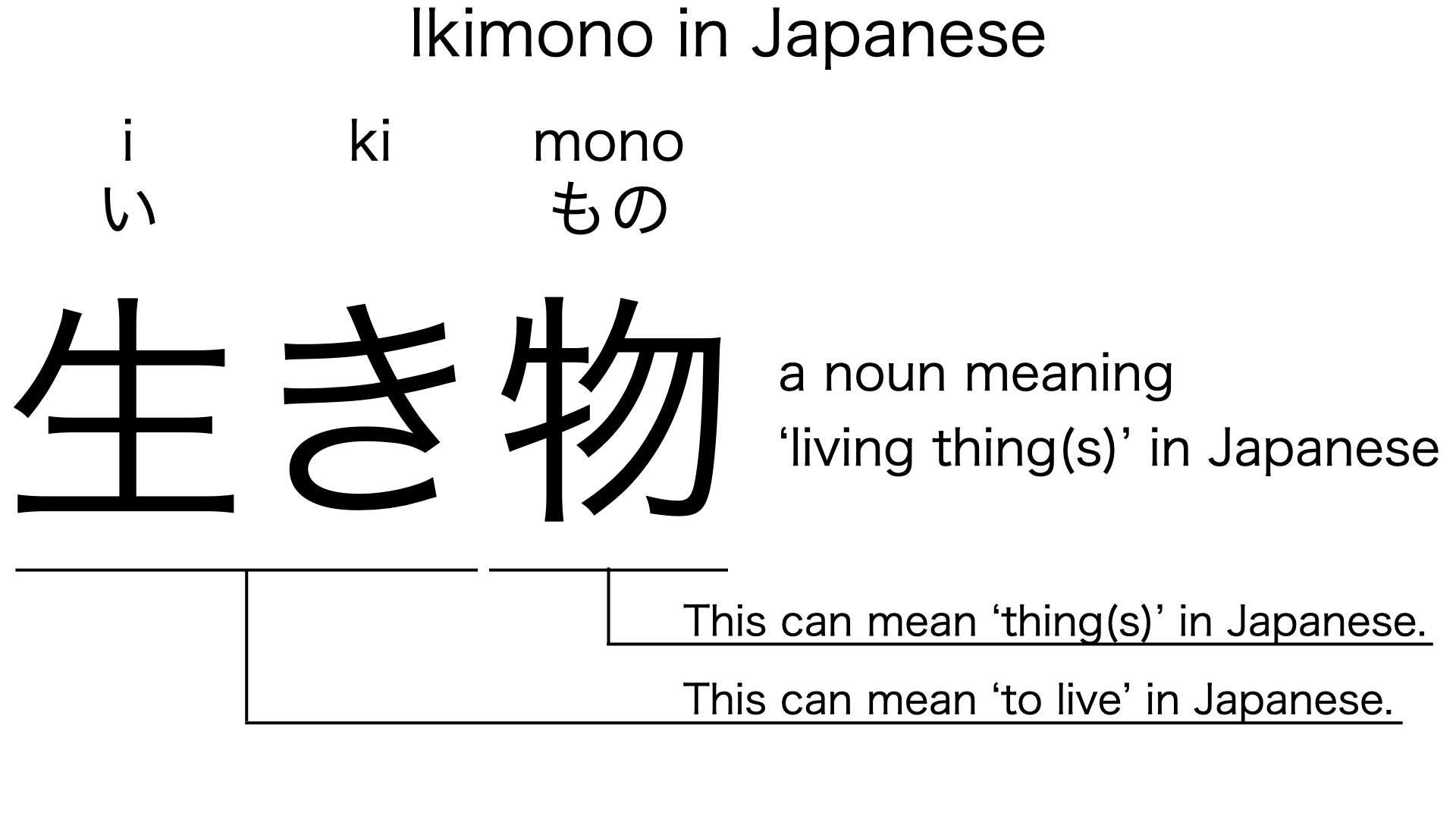What does “ikimono” mean in Japanese?
Native speakers say “ikimono” often to mean ‘living thing’ in Japanese. Perhaps, some Japanese learners know this word as it is sometimes used in Japanese movies, songs, novels, manga, anime, and the like. In this blog post, however, I will explain this word in detail based on its kanji expression. And also, I will explain how to use it through example sentences. My explanations would help Japanese learners understand “ikimono” more clearly. Then, let’s get started!
Contents
Definition and meanings of “ikimono”
Let me start with the definition and meanings of “ikimono”.
- ikimono – 生き物 (いきもの) : a noun meaning ‘creature’ or just ‘living thing’ in Japanese. This can also work as plural. Learn more about Japanese plural.
The definition and meanings are not that difficult, I think. To understand this noun more clearly, however, let me explain its kanji expression in detail.
What does “ikimono” literally mean in Japanese?
The kanji expression of “ikimono” consists of the following two parts:
- iki – 生き (いき) : one conjugation of the verb, “ikiru”, which means ‘to live’ in Japanese.
- mono – 物 (もの) : a noun often used to mean ‘thing’ in Japanese.
From these two parts, we can understand that the formed noun literally means ‘living things’ in Japanese. This literal interpretation is more or less in line with the actual meanings.

When we meet new kanji expressions, we should check their parts in detail to understand their meanings clearly and deeply. In many cases, kanji parts tell us a lot about the meanings of the expressions they form. Actually, here, we could get the better understanding of “ikimono” through the detailed check above.
So far, I’ve explained the definition and meanings of “ikimono” together with its kanji parts. Then, let me explain how to use it through the example sentences below.
Example #1: how to say “living things” in Japanese
watashi wa subete no ikimono wo mamori tai – 私は全ての生き物を守りたい (わたしはすべてのいきものをまもりたい)
I want to save all living things.
Below are the new words used in the example sentence.
- watashi – 私 (わたし) : a pronoun meaning ‘I’ in Japanese.
- wa – は : a binding particle working as a case marker or topic marker. In the example, this works after “watashi” to make the subject in the sentence.
- subete – 全て (すべて) : a noun meaning ‘all’ in Japanese.
- no – の : a case particle working to join two nouns. Normally, the first one can work as a modifier to describe the second. In the example, this works to join “subete” and “ikimono”. The formed phrase literally means ‘all living things’ in Japanese.
- wo – を : a case particle used to make the object word in a sentence. In the example, this is used after “subete no ikimono” to make the object in the sentence.
- mamori – 守り (まもり) : one conjugation of the verb, “mamoru“, which means ‘to save’ or such in Japanese. In the example, it has been conjugated for the better connection with its following word.
- tai – たい : an auxiliary verb used after a verb to make its desire form. In the example, this is used after “mamori” to make its desire form, “mamori tai”, which means ‘to want to save’ in Japanese.
This is a typical usage of “ikimono”. In this example, it works together with “subete” and “no” to mean ‘all living things’ in Japanese.
Example #2: another usage of “ikimono”
ikimono wa kanarazu shini masu – 生き物は必ず死にます (いきものはかならずしにます)
Living things will surely die.
Below are the new words used in the example sentence.
- kanarazu – 必ず (かならず) : an adverb meaning ‘surely’, ‘definitely’, or such in Japanese.
- shini – 死に (しに) : one conjugation of the verb, “shinu“, which means ‘to die’ in Japanese. In the example, it has been conjugated for the better connection with its following word.
- masu – ます : an auxiliary verb used after a verb to make it polite. Probably, this is well known as a part of Japanese masu form. In the example, this is used after “shini” to make it sound polite.
This is another typical usage of “ikimono”. In this example, it works together with the binding particle, “wa”, to become the subject in the sentence.
Summary
In this blog post, I’ve explained the definition and meanings of “ikimono” in detail based on its kanji expression. And also, I’ve explained how to use it through the example sentences. Let me summarize them as follows.
- ikimono – 生き物 (いきもの) : a noun meaning ‘creature’ or just ‘living thing’ in Japanese. This can also work as plural. This kanji expression literally means ‘living things’ in Japanese.
Hope my explanations are understandable and helpful for Japanese learners.
Leave a Reply